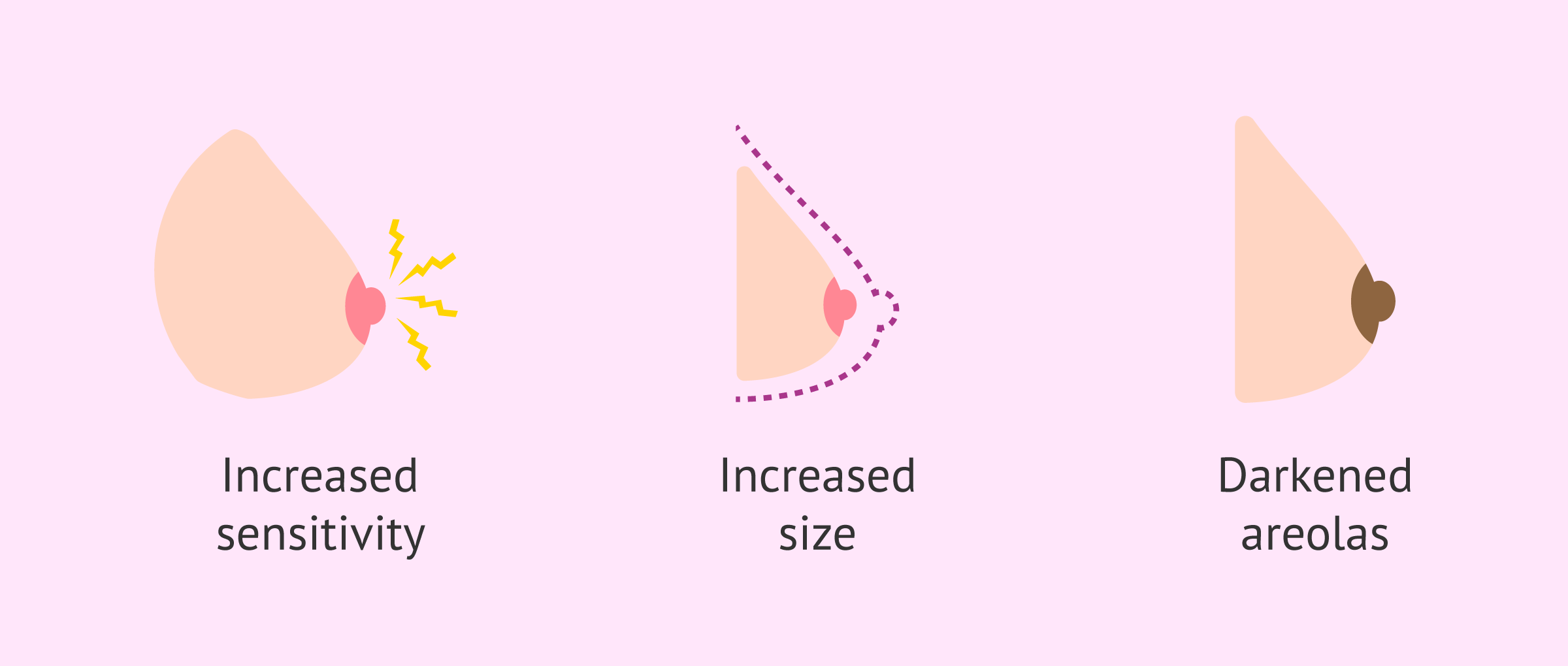1 Week Darkening Areola Early Pregnancy Pictures: Complete Medical Guide 2024
Comprehensive medical analysis of areola darkening as an early pregnancy sign, including visual guides, expert insights, and evidence-based information for expectant mothers.
Overview & Key Information
Quick Summary
Darkening of the areola (the pigmented area around the nipple) can occur as early as 1 week after conception and is one of the earliest signs of pregnancy. This natural phenomenon affects approximately 75-90% of pregnant women and is caused by hormonal changes, particularly increased levels of estrogen and progesterone.
Timeline
- Week 1-2: Initial darkening begins
- Week 4-6: Noticeable color changes
- Week 8-12: Significant darkening
- Throughout pregnancy: Progressive changes
Statistics
- 75-90% of women experience this
- 50% notice changes in week 1-2
- 85% see changes by week 6
- 95% experience it by second trimester
The darkening of areolas during early pregnancy is a fascinating biological adaptation that serves multiple purposes. This change is primarily driven by the dramatic increase in pregnancy hormones, which prepare the breast tissue for eventual breastfeeding. Understanding this process can help expectant mothers recognize early pregnancy signs and alleviate concerns about these natural bodily changes.
Research indicates that these changes can begin as early as 6-8 days after conception, making areola darkening one of the earliest detectable pregnancy symptoms. The intensity and timeline of these changes vary significantly among individuals, influenced by factors such as skin tone, hormonal sensitivity, and genetic predisposition.
Visual Guide: Areola Changes During Early Pregnancy
Medical Disclaimer
The following visual information is for educational purposes only. Individual variations are normal, and not all women will experience identical changes. Consult with a healthcare provider for personalized medical advice.
Normal Progression Timeline

Figure 1: Progressive breast and areola changes throughout pregnancy, showing the natural evolution from early pregnancy through breastfeeding preparation.
Early Pregnancy Changes

Figure 2: Visual comparison showing the typical progression of areola darkening during the first weeks of pregnancy.
What to Look For: Key Visual Changes
Color Changes
- • Light pink to deeper rose
- • Brown to darker brown
- • Gradual deepening over weeks
- • Increased pigmentation intensity
Size & Texture
- • Increased diameter (20-50%)
- • More pronounced texture
- • Enhanced Montgomery’s glands
- • Heightened sensitivity
Progression Stages
Week-by-Week Timeline: Areola Changes
Initial Conception Changes
6-8 days after conception: The earliest hormonal changes begin affecting breast tissue. Some women may notice very subtle changes in areola sensitivity.
- • Slight tingling sensation
- • Minimal color change
- • Increased sensitivity
Early Visible Changes
14-21 days: More noticeable changes begin to occur. The areola may start to appear slightly darker and feel more tender to touch.
- • Visible color deepening
- • Increased breast tenderness
- • Slight size increase
Pronounced Darkening
1-1.5 months: Significant hormonal changes lead to more pronounced areola darkening. Most women begin to notice definitive changes during this period.
- • Clear color change
- • Montgomery’s glands prominent
- • Areola diameter increase
Maximum Early Changes
2-3 months: Peak early pregnancy changes occur. The areola reaches its maximum darkening for the first trimester and continues to evolve.
- • Maximum color intensity
- • Significant size increase
- • Enhanced texture changes
Important Timeline Notes
Individual Variation
Timeline can vary significantly based on individual hormonal responses, skin tone, and genetic factors. Some women may see changes earlier or later than the typical timeline.
Progression Pattern
Changes typically progress gradually rather than suddenly. The darkening process continues throughout pregnancy and may peak during the second trimester.
Scientific Causes & Hormonal Mechanisms
Primary Hormonal Triggers
The darkening of areolas during early pregnancy is primarily caused by a complex interplay of hormonal changes that begin almost immediately after conception. This process involves multiple hormones working together to prepare the body for pregnancy and eventual breastfeeding.
Estrogen
- • Stimulates melanocyte activity
- • Increases melanin production
- • Enhances pigmentation sensitivity
- • Promotes blood flow increase
Progesterone
- • Supports estrogen effects
- • Prepares mammary tissue
- • Increases skin sensitivity
- • Enhances cellular changes
Biological Mechanism
Step 1: Hormonal Surge
Estrogen and progesterone levels rise dramatically after implantation, triggering cellular changes.
Step 2: Melanocyte Activation
Specialized pigment-producing cells in the areola become highly active and increase melanin synthesis.
Step 3: Visible Darkening
Increased melanin deposits create the characteristic darkening visible to the naked eye.
Hormonal Changes Timeline
| Timeline | Estrogen Level | Progesterone Level | Visible Changes |
|---|---|---|---|
| Week 1-2 | 2-3x baseline | 5-10x baseline | Minimal, subtle changes |
| Week 3-4 | 5-8x baseline | 20-30x baseline | Noticeable darkening begins |
| Week 6-8 | 10-15x baseline | 50-80x baseline | Significant color change |
| Week 10-12 | 20-25x baseline | 100-150x baseline | Maximum first trimester changes |
Evolutionary Purpose
The darkening of areolas serves important biological functions beyond pregnancy indication. Research suggests this adaptation helps newborns locate the nipple more easily for breastfeeding, as infants can better distinguish darker colors from surrounding skin. Additionally, the increased pigmentation may provide protective benefits against UV radiation and mechanical stress during nursing.
Associated Symptoms & Signs
Comprehensive Symptom Profile
Areola darkening rarely occurs in isolation. It’s typically accompanied by a constellation of other early pregnancy symptoms that collectively provide a strong indication of conception. Understanding these associated signs can help women recognize pregnancy earlier and seek appropriate prenatal care.
Breast-Related Symptoms
-
Tenderness & Sensitivity: Increased sensitivity to touch, especially around nipples
-
Breast Enlargement: Gradual increase in breast size and fullness
-
Nipple Changes: Nipples may appear more prominent and darker
-
Montgomery’s Glands: Small bumps around areola become more pronounced
Hormonal Symptoms
-
Mood Changes: Emotional sensitivity and mood swings
-
Fatigue: Increased tiredness and need for rest
-
Food Aversions/Cravings: Changes in taste preferences and appetite
-
Frequent Urination: Increased bathroom visits, especially at night
Menstrual Changes
-
Missed Period: Most obvious early pregnancy sign for regular cycles
-
Implantation Bleeding: Light spotting 6-12 days after conception
-
Cramping: Mild cramping similar to menstrual cramps
Physical Symptoms
-
Elevated Body Temperature: Slightly higher basal body temperature
-
Nausea: Morning sickness may begin around week 4-6
-
Bloating: Abdominal bloating and digestive changes
Symptom Occurrence Rates
Areola Darkening
Breast Tenderness
Fatigue
Nausea
When to Consult a Healthcare Provider
While areola darkening is typically normal, certain symptoms warrant medical attention to ensure proper prenatal care and rule out complications.
- • Severe breast pain or unusual discharge
- • Rapid, dramatic color changes
- • Signs of infection (redness, warmth, swelling)
- • Missed period combined with multiple symptoms
- • Any concerns about pregnancy progression
Frequently Asked Questions
Can areola darkening occur as early as 1 week after conception?
Yes, areola darkening can begin as early as 6-8 days after conception, which corresponds to about 1 week. However, changes at this early stage are typically very subtle and may not be noticeable to all women. The darkening becomes more pronounced as hormone levels continue to rise throughout the first few weeks of pregnancy. Individual sensitivity to hormonal changes varies, so some women may notice changes earlier than others.
How much darker do areolas get during pregnancy?
The degree of darkening varies significantly among individuals and depends on baseline skin tone. Generally, areolas can darken by 2-4 shades from their original color. Women with lighter skin tones may see more dramatic changes, while those with darker skin tones may experience more subtle shifts. The darkening typically peaks during the second trimester and may continue to deepen throughout pregnancy.
Will my areolas return to their original color after pregnancy?
In many cases, areolas do lighten after pregnancy and breastfeeding, but they rarely return to their exact pre-pregnancy color. Most women retain some degree of the darker pigmentation permanently. The extent of color return varies based on individual factors including genetics, hormone levels, and breastfeeding duration. This permanent change is completely normal and not a cause for concern.
Can areola darkening occur without pregnancy?
Yes, areola darkening can occur due to other factors including hormonal fluctuations during menstrual cycles, oral contraceptive use, hormone replacement therapy, certain medications, or underlying medical conditions. However, when combined with other early pregnancy symptoms like missed periods and breast tenderness, areola darkening is a strong indicator of pregnancy. If you experience unexplained areola darkening, consult with a healthcare provider for proper evaluation.
Do both areolas darken equally during pregnancy?
While both areolas typically darken during pregnancy, they may not change at exactly the same rate or to the same degree. Slight asymmetry in color changes is normal and not cause for concern. Some women may notice one areola darkening slightly more than the other, or changes occurring at different times. This variation is due to individual differences in hormone receptor sensitivity and blood flow patterns.
What should I do if I notice areola darkening?
If you notice areola darkening and suspect you might be pregnant, consider taking a home pregnancy test, especially if you’ve missed your period or have other early pregnancy symptoms. Schedule an appointment with your healthcare provider to confirm pregnancy and begin prenatal care. Even if the test is negative but symptoms persist, consult with a medical professional to rule out other potential causes and ensure optimal reproductive health.
Are there any risks associated with areola darkening during pregnancy?
Areola darkening during pregnancy is a completely normal physiological change and poses no health risks. It’s actually a sign that your body is responding appropriately to pregnancy hormones. However, if you experience severe pain, unusual discharge, signs of infection, or extremely rapid changes, consult your healthcare provider. These symptoms could indicate complications that require medical attention, though they are not directly related to the normal darkening process.
How reliable is areola darkening as a pregnancy test?
While areola darkening is a common early pregnancy sign affecting 75-90% of pregnant women, it should not be used as a standalone pregnancy test. Other conditions can cause similar changes, and some pregnant women may not experience noticeable darkening, especially in very early pregnancy. Home pregnancy tests and medical confirmation remain the most reliable methods for detecting pregnancy. Areola darkening is best considered as one piece of evidence alongside other symptoms and test results.
Need More Information?
For additional information about pregnancy signs, symptoms, and healthcare guidance, explore our comprehensive health resources.
Conclusion & Key Takeaways
Areola darkening during the first week of pregnancy represents one of the earliest and most reliable signs of conception. This natural physiological change, affecting approximately 75-90% of pregnant women, results from the dramatic increase in estrogen and progesterone levels that begin almost immediately after implantation.
Essential Points to Remember
Timeline & Development
- • Changes can begin 6-8 days after conception
- • Progression continues throughout pregnancy
- • Peak changes typically occur in second trimester
- • Individual variation is completely normal
Medical Significance
- • Strong early pregnancy indicator
- • Serves important biological functions
- • Completely safe and natural process
- • Should be considered with other symptoms
Understanding these changes empowers women to recognize early pregnancy signs and seek appropriate medical care promptly. While areola darkening is an excellent indicator, it should always be confirmed through proper pregnancy testing and professional medical evaluation.
Next Steps
If you’re experiencing areola darkening along with other early pregnancy symptoms, consider these recommended actions:
- Take a home pregnancy test for initial confirmation
- Schedule an appointment with your healthcare provider
- Begin prenatal vitamin supplementation if planning pregnancy
- Monitor other early pregnancy symptoms
- Maintain a healthy lifestyle and diet
Quick Facts
Onset Time
6-8 days after conception
Occurrence Rate
75-90% of pregnant women
Primary Cause
Estrogen & Progesterone
Safety
Completely normal & safe
Related Articles
Medical Disclaimer
This article is for educational purposes only and should not replace professional medical advice. Always consult with a qualified healthcare provider for personalized medical guidance, diagnosis, and treatment recommendations.






